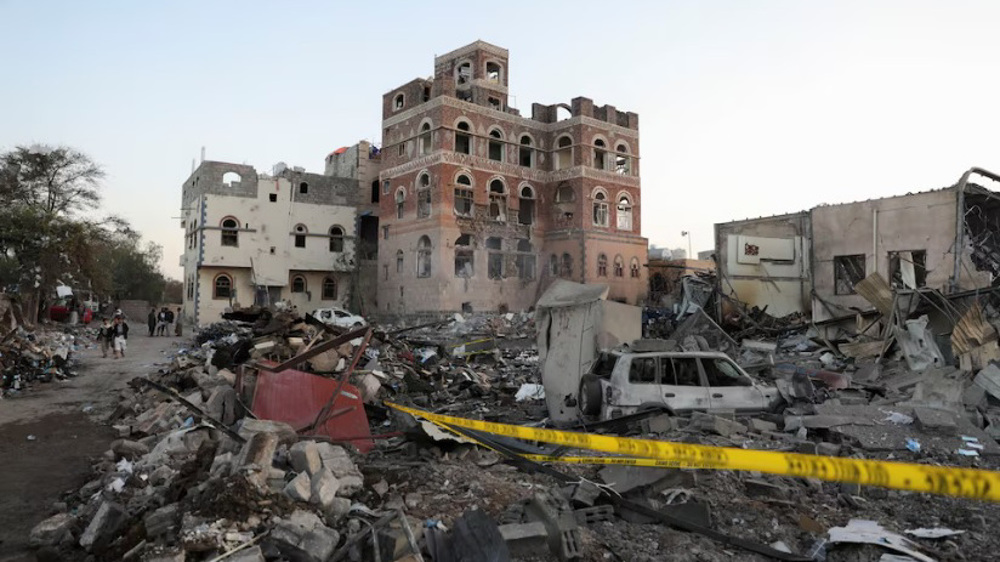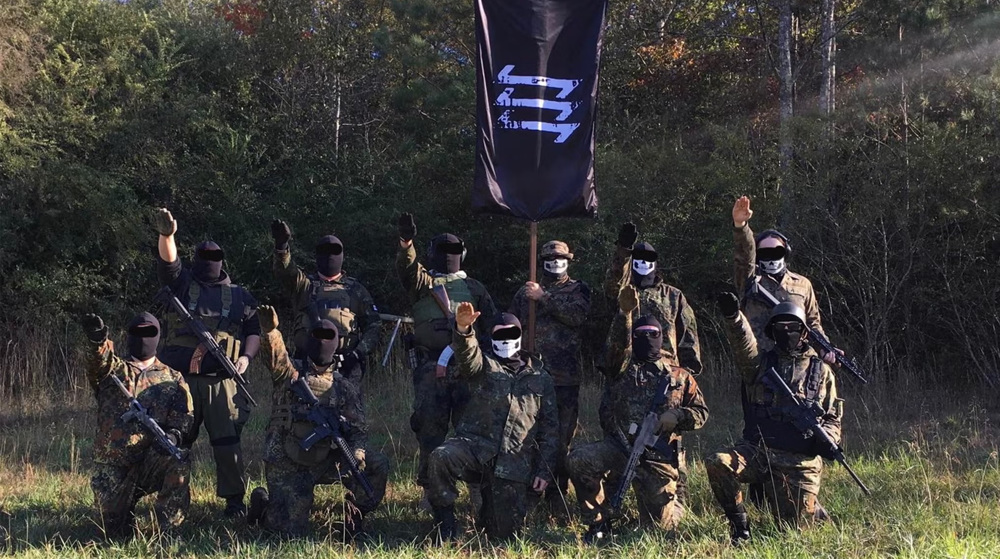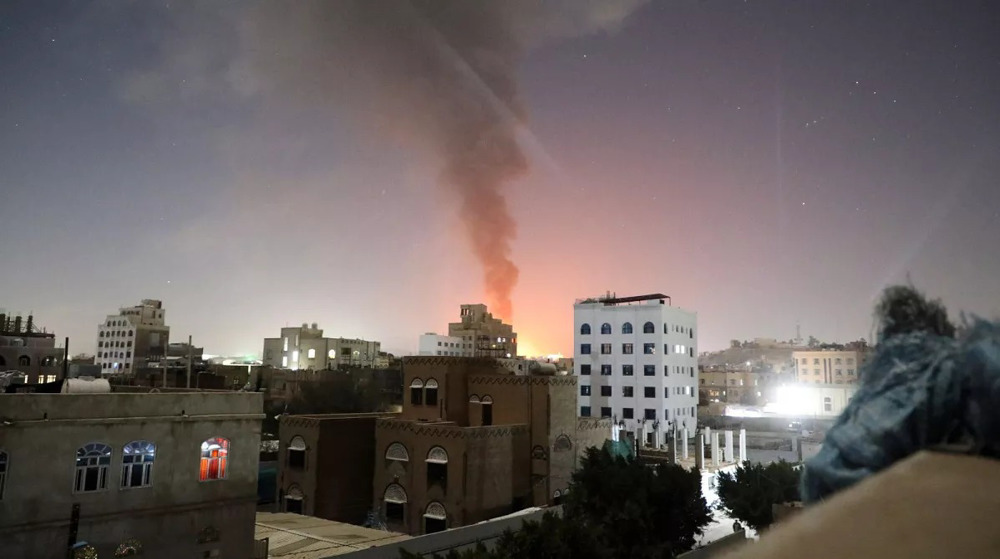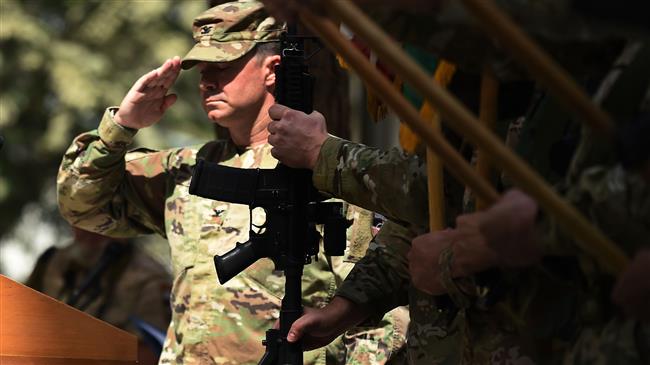US military propping up Daesh in Afghanistan: Report
The United States military has been allowing members of Daesh and their weapons into Afghanistan following the terror group's recent defeats in Syria and Iraq, a new report suggests, raising serious questions about Washington’s future plans for the country.
According to the Monday report by the Economic Times, while Afghanistan’s skies remain under full control of American and NATO forces stationed in the country, sources are claiming that weapons are often being transferred to the country by helicopters that bear no identifying insignia.
The report estimated that around 10,000 members of the Takfiri terrorist group were present in Afghanistan and the number was growing on Washington’s watch.
The suspected ties between Daesh and the US military in Afghanistan is nothing new.
Hamid Karzai, Afghanistan’s former president, told Al Jazeera in 2017 that the US was colluding with Daesh in Afghanistan and helping it cement its grip on areas in the eastern parts of the country.
“In my view, under the full [US] presence, surveillance, military, political, intelligence, Daesh has emerged,” he said. “And for two years, the Afghan people came, cried loud about their suffering, of violations. Nothing was done.”
Karzai further noted that America had specifically used Daesh as an excuse earlier that year to drop the largest non-nuclear bomb ever built in Afghanistan.
"And the next day, Daesh takes the next district in Afghanistan," he said. "That proves to us that there is a hand in it and that hand can be no one else but them [the US] in Afghanistan."
On April 11, 2017, the US military dropped the GBU-43/B Massive Ordnance Air Blast (MOAB), dubbed the "mother of all bombs", on alleged Daesh hideouts in Afghanistan’s Nangarhar Province, killing nearly a hundred people, whom the US insists were all militants.
Read More:
Talks with Taliban
Daesh’s rise in Afghanistan comes at a time when the Trump administration is engaged in peace talks with the Taliban militant group, claiming that the war -- which began in 2001 -- has run its course and it is time to bring US troops back home.
Today, around 14,000 US troops remain in Afghanistan, half of them assigned to what Washington insists are counter-terrorism missions.

The Taliban's five-year rule over at least three quarters of Afghanistan came to an end following the 2001 US-led invasion, but 17 years on, the militant group has mounted a comeback.
According to an official US report last year, the central government in Kabul is currently controlling a little more than 50 percent of the country, down from 72 percent in 2015.
All of this while the northern parts of the country are turning into a support base for terrorist groups led by the Afghan branches of Daesh, which have been building a stronghold to make another attempt at forming a so-called caliphate --- a dream that was shattered in Syria and Iraq thanks to efforts by the governments of those countries as well as help from Iran and Russia.
Familiar rhetoric
Earlier this month, unnamed US officials warned that Daesh-affiliated terrorists of the so-called ISIS-K group in Afghanistan were preparing to carry out attacks on US mainland, the USA Today reported.
The official further warned that the group was carrying out more deadly strikes in Afghanistan every year.
For example, it mounted six major attacks in Kabul in 2016. The number grew to 18 attacks in 2017 and 24 in 2018. The group is on pace to match or exceed that total this year, the official said.
According to the ET, there were also reports that Daesh was trying to use its Afghan bases to destabilize Central Asian countries.
American officials had made similar warnings in the past when the terror group started its brutal takeover in Iraq and Syria.
Last year, Trump came under bipartisan fire in Washington by announcing his plans to withdraw troops from both Syria and Afghanistan in the wake of Daesh’s defeat.
The opponents claimed while it was true that Daesh had lost almost all territories it once held, it was still capable of carrying out attacks in the West.
The pressure to halt the decision was so much that Trump was forced to water down his plans of a full withdrawal from Syria to a partial one, where hundreds of troops would continue to stay there.
Analysts say, despite its many claims to fight Daesh and its offshoots in the Middle East region, there is mounting evidence that the US military has been helping the terror group to use it as an asset later.
This was best seen in Syria, where the US military repeatedly pounded Syrian army forces fighting Daesh and intervened on several occasions to hamper the Syrian government’s offensives to purge the terrorists.
Iran had warned Afghanistan
Iranian Defense Minister Brigadier General Amir Hatami warned his Afghan counterpart last year that the US was transferring Daesh to Afghanistan to justify its military presence in the Central Asian country.
"Iran has always been concerned about conspiracies hatched by outsiders against the Afghan people and has for many years done its best to ameliorate the suffering of the oppressed people of Afghanistan," he told Tariq Shah Bahrami during a phone call in February last year.
"After heavy blows suffered in these two countries, the US tried to take Daesh out of the scene and transfer it to Afghanistan to justify its presence there through [the group's] shameless crimes," he added.
Leader of the Islamic Revolution Ayatollah Seyyed Ali Khamenei issued a similar warning about Washington's attempt to relocate Daesh from the Middle East to Afghanistan.

US conducts new airstrikes on Yemen’s Ma’rib, al-Jawf provinces

Pentagon allowing extremism in US military to go unchecked: Report

US airstrikes on Yemeni factory kill 6 civilians
More Israeli soldiers call for end to Gaza war, immediate negotiations over captives
VIDEO | Zionist control at Columbia University
VIDEO | Zionists and pornography
Iranian diplomat says ‘excessive unilateralism’ renders UN ineffectual against certain states
US conducts new airstrikes on Yemen’s Ma’rib, al-Jawf provinces
Full-blown famine grips Gaza as 91% of population faces extreme food insecurity: NGO
VIDEO | Press TV's news headlines
Iranian FM informs Saudi counterpart about indirect talks








 This makes it easy to access the Press TV website
This makes it easy to access the Press TV website